Fill-in-the-blanks habits on the road
Present at the intersection of Le Trong Tan - Quang Trung (Ha Dong) - the location of the collision between a truck and a motorbike that left one person dead on the spot on November 24, the reporter witnessed the scene of extremely chaotic traffic.
Sharing with reporters, Mr. N.V.T (a motorbike taxi driver who often stands at this intersection) said that common violations here are running red lights and stopping and parking in the wrong lane.
"There have been so many accidents here, people are very chaotic, they rush in whenever they see an empty space, especially motorbikes. Stopping at a red light, they all crowd up and stand in the middle of the intersection," Mr. N.V.T shared.
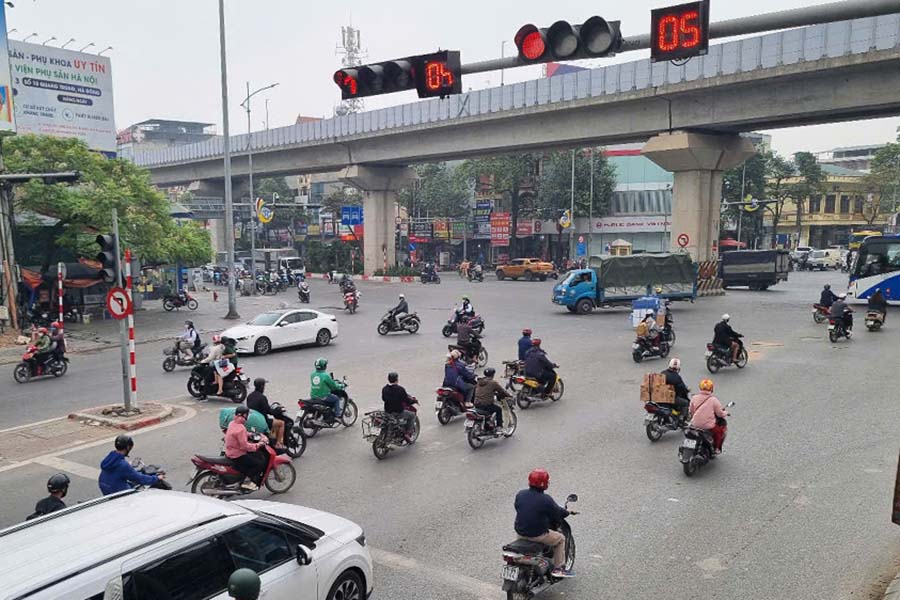
Recording for about 30 minutes at this intersection, the reporter witnessed a series of motorbikes running red lights from Le Trong Tan to Van Phu Urban Area.
According to observations, this route has many heavy trucks circulating. In particular, the behavior of stopping at red lights in the lane for vehicles turning right also causes congestion, causing frustration for the vehicles behind.
In fact, the habit of "filling in the blanks" on the streets of Hanoi is not uncommon. Due to the increasing density of vehicles, while the infrastructure is not yet synchronized, to avoid congestion, many people will try to squeeze through the blank spaces on the road.
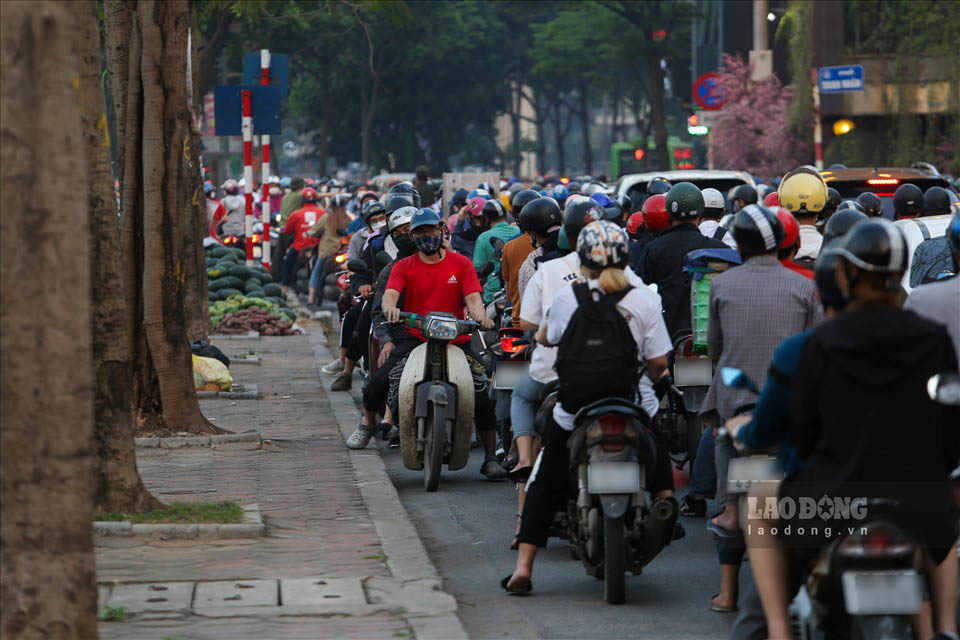
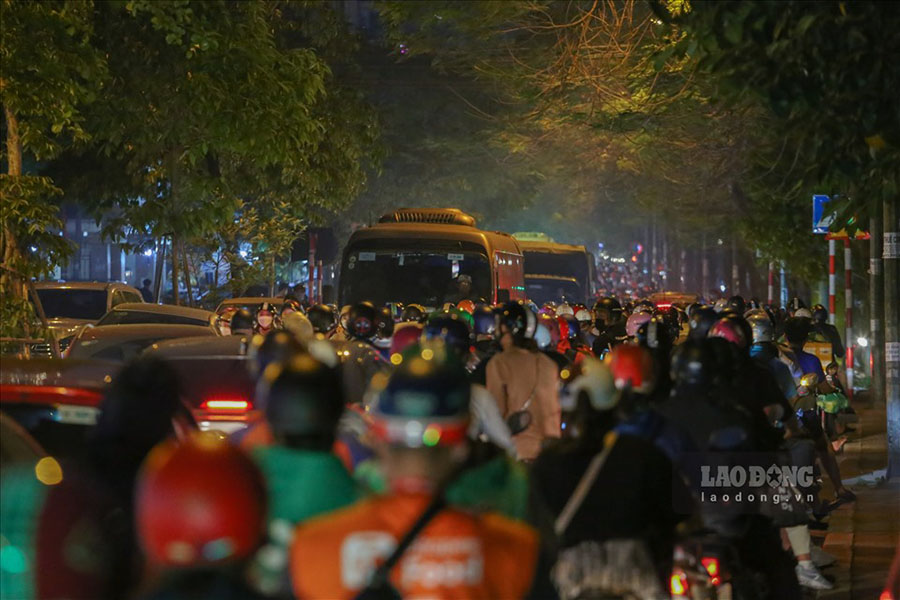
For example, on Nguyen Ngoc Vu Street (Cau Giay District) or Giap Nhat Street (Thanh Xuan District), during rush hour, these roads almost turn into one-way streets. Accordingly, many people deliberately encroach on the opposite lane, making it difficult or even impossible for vehicles traveling in the opposite direction to move. This is also one of the causes of traffic jams.
Avoid blind spots of heavy trucks
The habit of "filling in the blank" does not only occur with motorbikes but also with cars. Currently in Hanoi, the awareness of lane compliance of a part of the population is not high. Besides, not all roads have clear lanes for cars, motorbikes or non-motorized vehicles.
On social media sites about traffic, there is no shortage of angry posts about many four-lane roads but cars use all four lanes, at which point motorbikes can only go on the sidewalk, or weave between cars, which is very dangerous, even falling into the blind spots of cars.
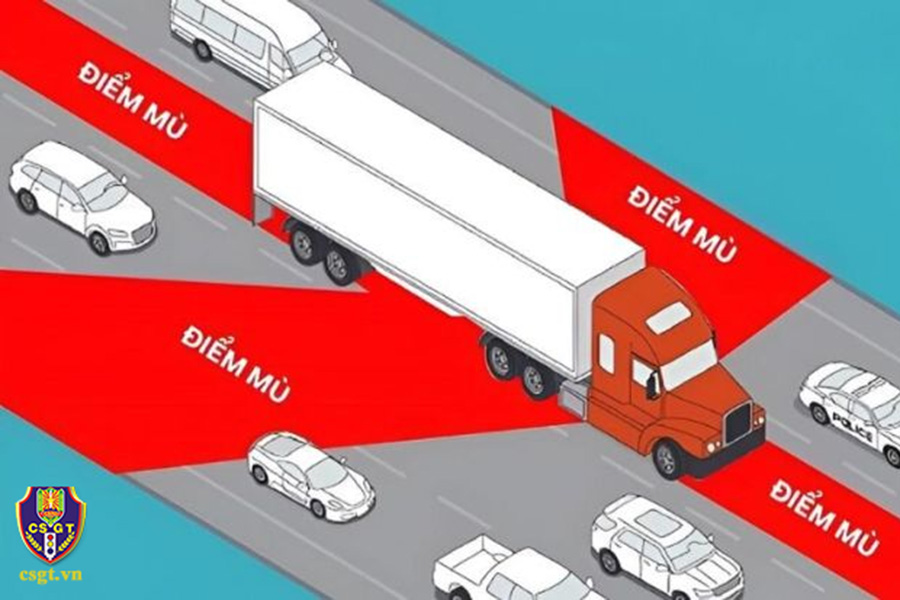
Accordingly, the blind spot of a car is the area outside the car that is obscured and not in the driver's field of vision, especially large trucks, tankers, and container trucks.
The Traffic Police Department recommends that to overcome blind spots and prevent traffic accidents, car drivers need to strictly comply with the law on ensuring traffic safety and order.
Drivers need to sit in the correct position when driving to be able to observe everything around them well and limit blind spots when driving on the road. Reduce speed, keep a safe distance from other vehicles when going through densely populated areas, national highways, and roads with high traffic volume.
Car drivers, especially large trucks, container trucks, buses, 45-seat passenger vans, sleeper buses, etc., need to adjust their rearview mirrors properly and appropriately for each situation to minimize the vehicle's blind spots, or install additional blind spot cameras (a solution being applied by many businesses).
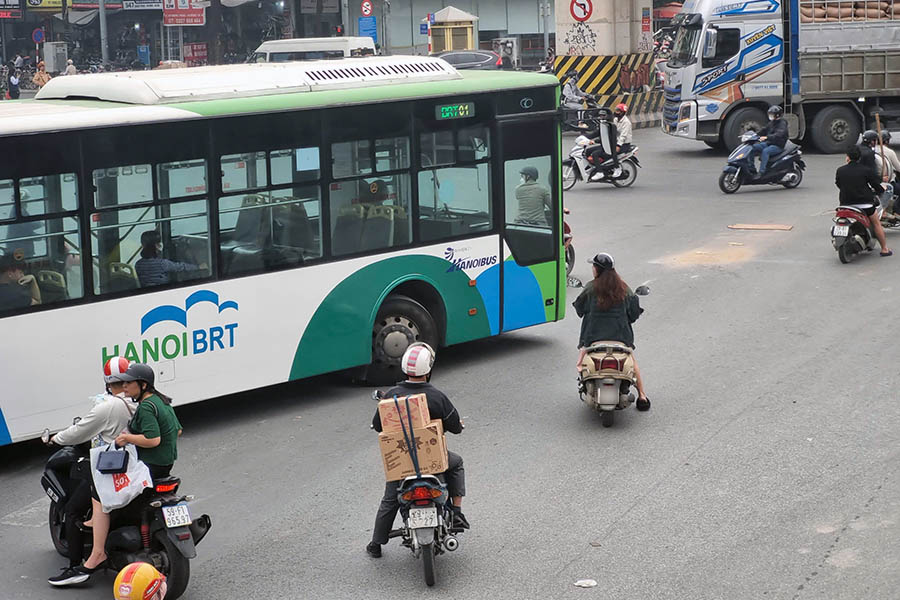
For traffic participants, drivers of motorbikes, mopeds, rudimentary vehicles, pedestrians... in addition to complying with the provisions of the law on ensuring traffic safety, it is necessary to learn and recognize the blind spots of automobiles to proactively avoid them. Must focus on observing, absolutely do not go close, go right in front of the car, go close to the sides of the car or cut across the direction of traffic of cars;
When approaching curves or areas where a change of direction is required, drivers of motorbikes, scooters, and non-motorized vehicles must slow down and give way to cars in front. Absolutely do not overtake cars when those vehicles have signaled a change of direction; do not overtake vehicles in the same direction as large trucks, container trucks, buses, 45-seat passenger vans, sleeper buses, etc.









